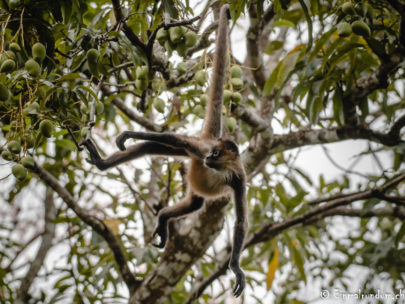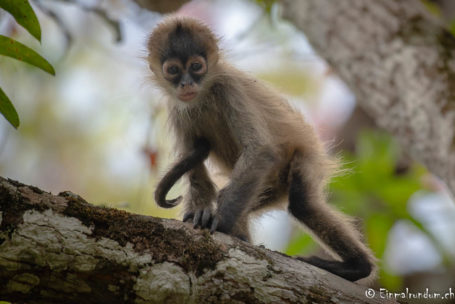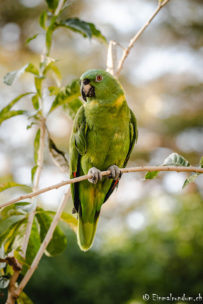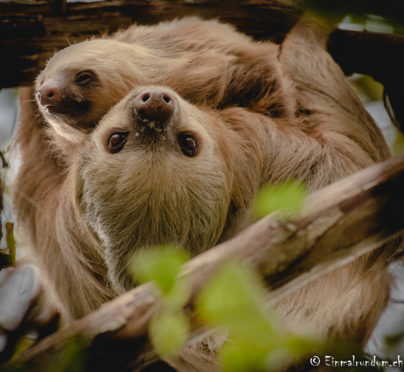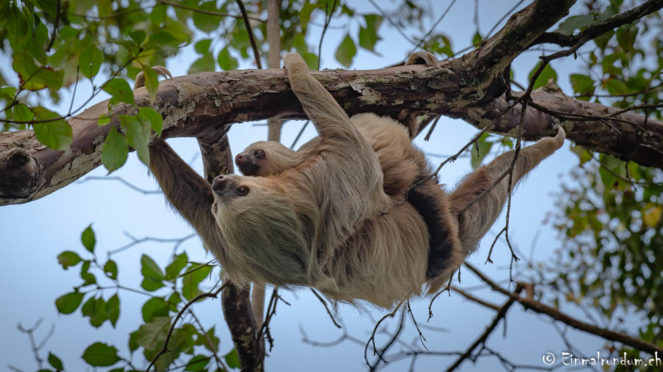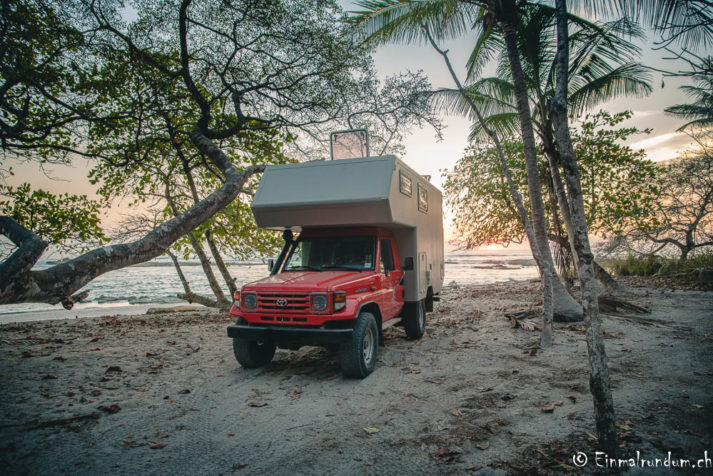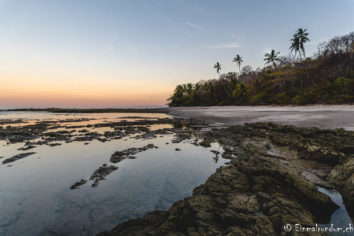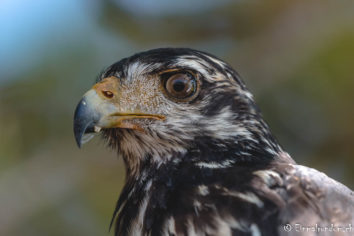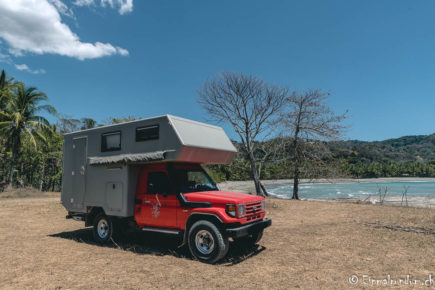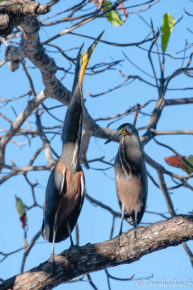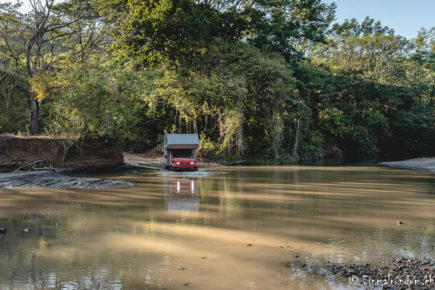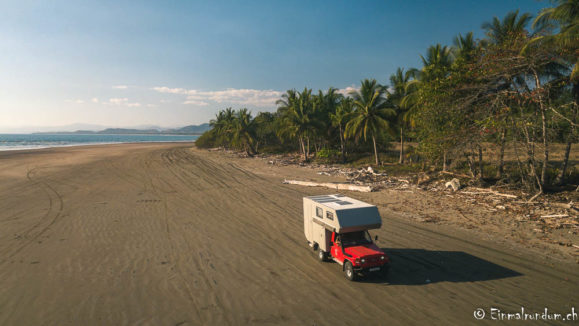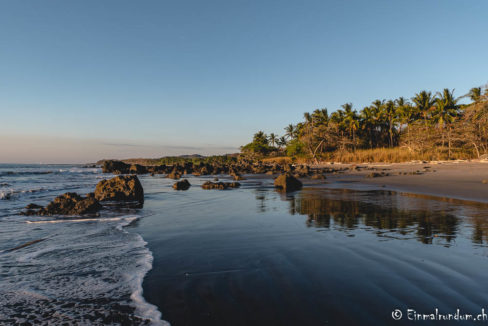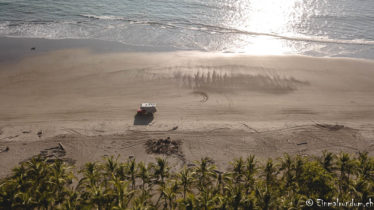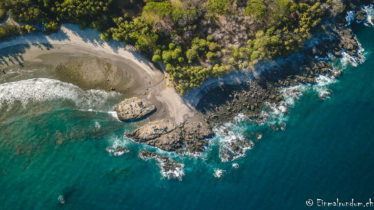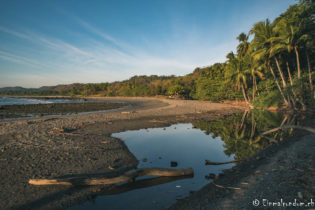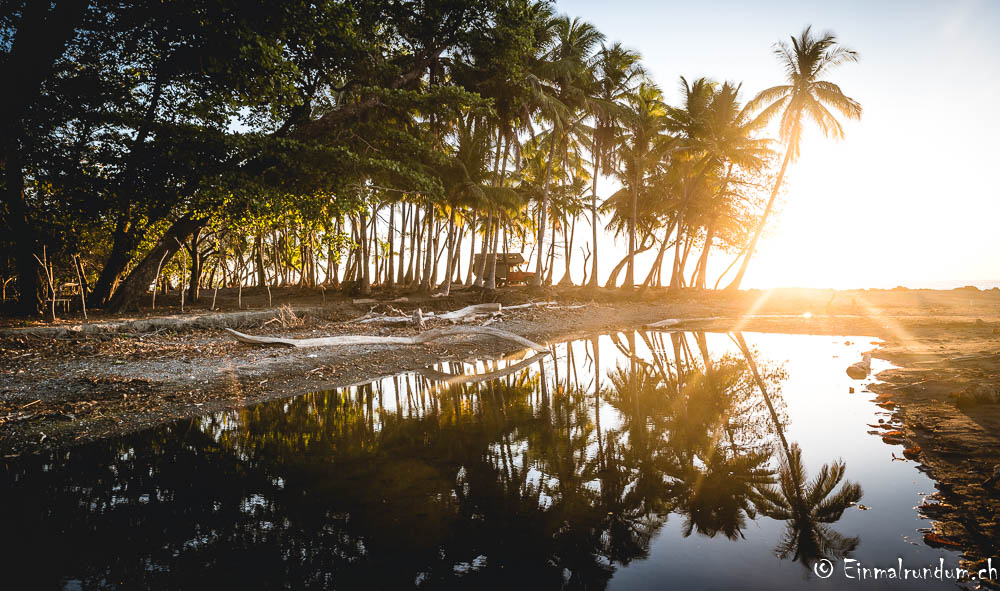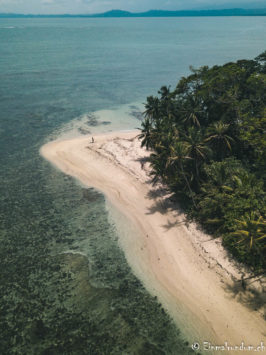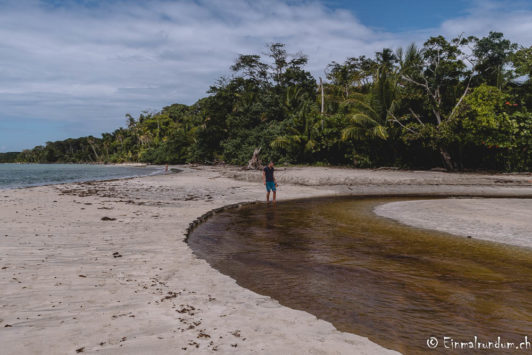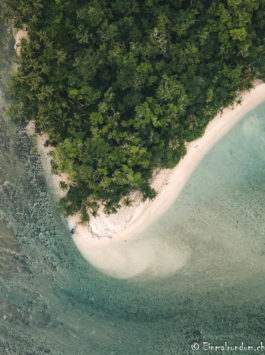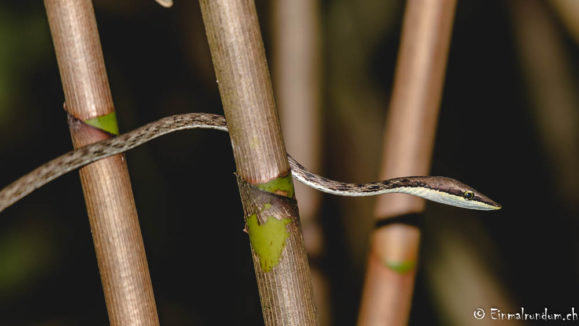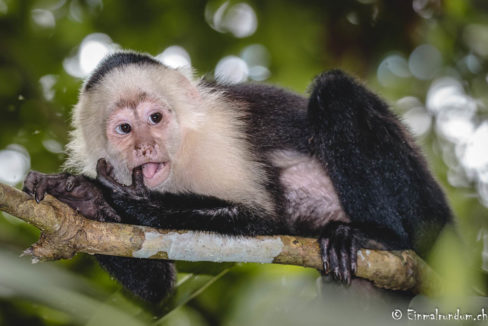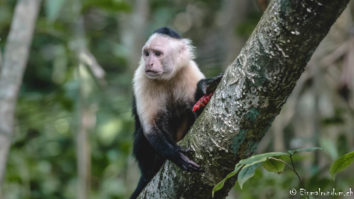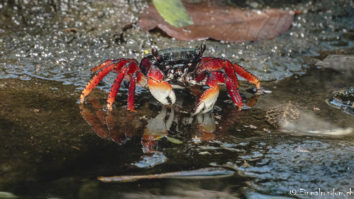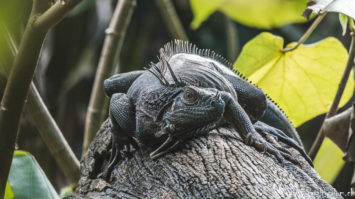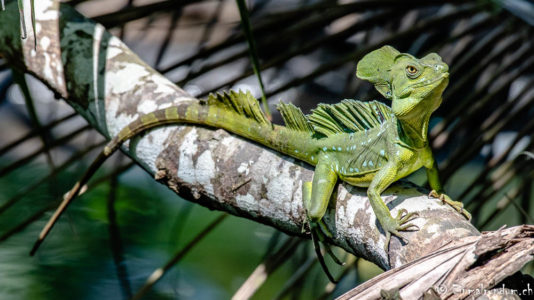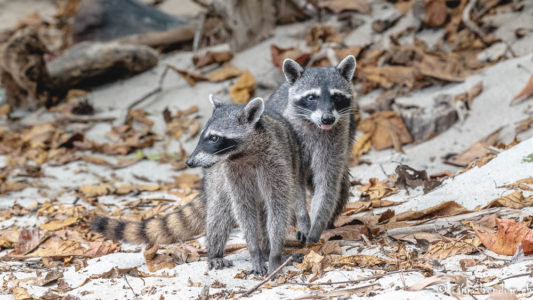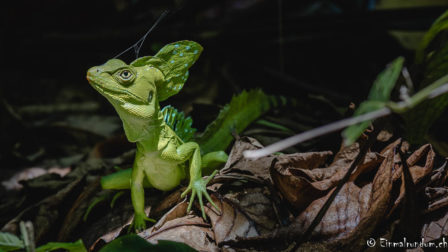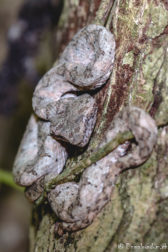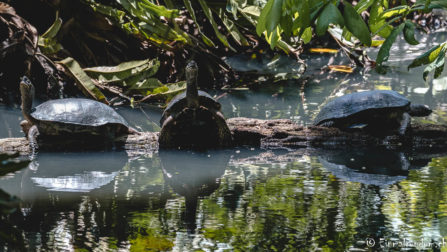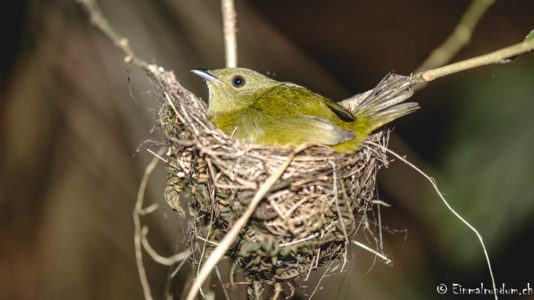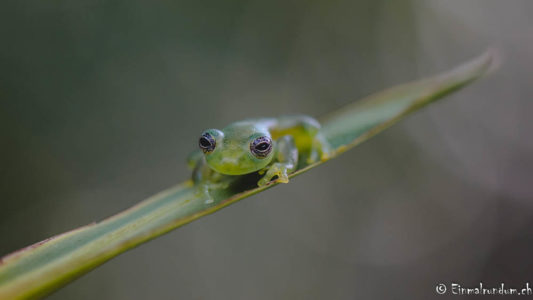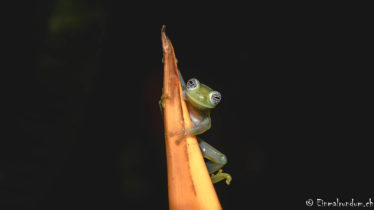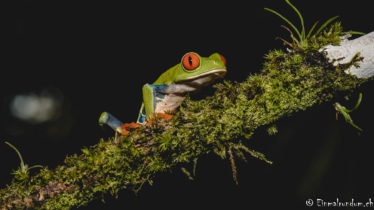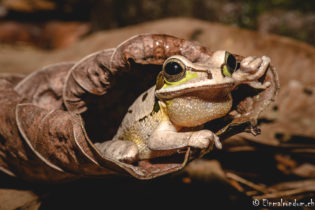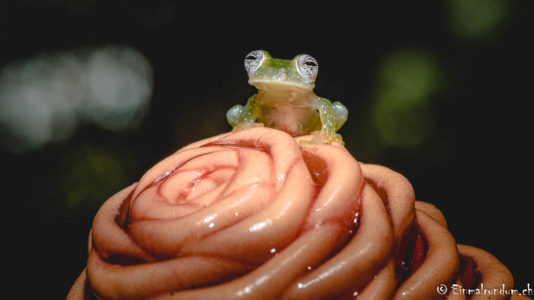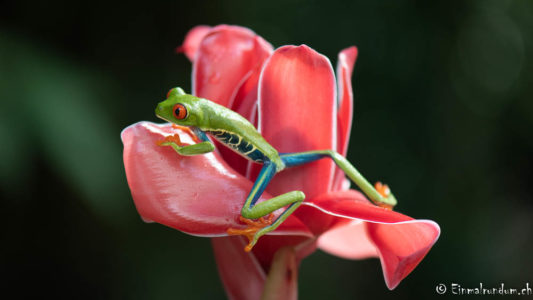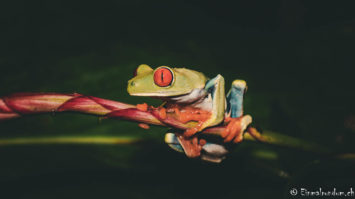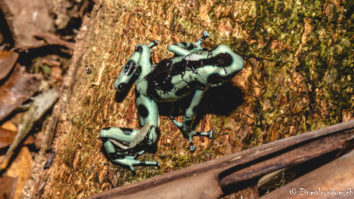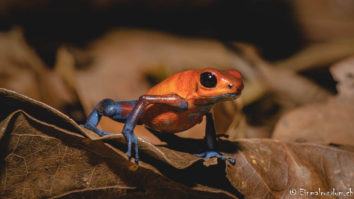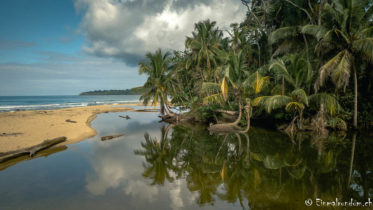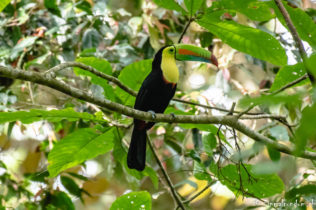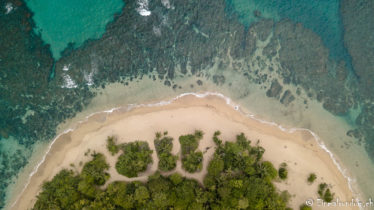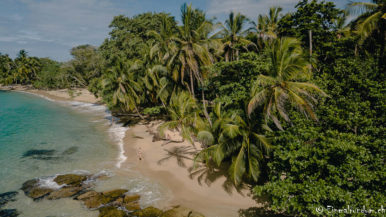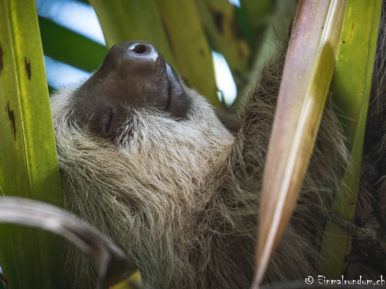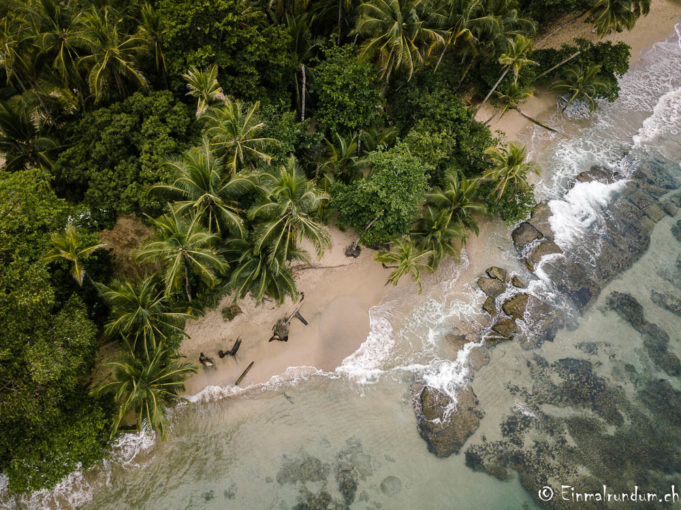COSTA RICA’S COASTS
We have been watching the spider monkeys above our heads swinging from branch to branch for a while now. We are in the very north of Costa Rica and stand under a huge tree that is the living room of these little circus artists. The spider monkeys share their home with many birds and a sloth mum with her baby. Unlike the monkeys, however, the two move only very little. Most of the time they lie tightly intertwined in a branch fork and sleep. Just as it should be for sloths. ? Only now and then, when the stomach growls, they slowly grab for a leaf, put it in their mouths and chew it with relish. After swallowing, they fall asleep again. A digestive nap so to say. We also move very slow, because it is quite hot and every movement makes us sweat.
A DRY PENINSULA
Next, we visit the Nicoya Peninsula on the Pacific coast of the country. The temperatures here are even higher, but it is drier. The streets are all dirt roads and after a few kilometers only, our car is completely dusty. Once again, we are glad that we have the luxury of an air conditioning during the drive and thanks to the bad and bumpy roads, we only make slow progress and often drive almost the whole day. We are rewarded with long and beautiful bays and beaches. We feel safe again in Costa Rica and park our home-on-wheels for a few nights on the oceanfront under the palm trees. We are somewhat surprised when, despite the drought, we suddenly have to cross a stream! But the water level is low and we almost have the feeling that our vehicle is happy to cool off its tires. At one point, the track even leads directly for a couple of kilometers on the beach. We are assured that we have enough time to leave the beach again before the tide comes in and so we enjoy the adventurous ride along the sea.
Just outside of Montezuma we find another beautiful place right by the sea. Nearby is a small stream, which – before it opens into the sea – forms a small freshwater lagoon. Here we cool our overheated bodies several times a day and enjoy the Robinson Crusoe life under the shady coconut palms on the beach.
COLOURFUL WILDLIFE IN THE CARIBBEAN
After so much Pacific, we want a direct comparison with the Caribbean and so we cross Costa Rica and change without further ado the coast. Our first stop is the sleepy village Cahuita. Here lies a small but beautiful national park directly at the sea which we want to explore. The temperatures are still high, but fortunately not as high as on the Pacific side.
And the hike is well worth it! We find a tree snake, a poisonous viper and marvel at the small, dragon-like and grass green lizards that live here. When they escape, they run so fast that they can walk on water and are therefore called “Jesus Christ lizards”. We are fascinated by the variety of reptiles and amphibians. Small, red frogs with blue legs hide in the undergrowth.
We are so excited about the them, that we want to see more and we decide to go on a frog tour. Our experienced guide actually finds various other specimens and so we can observe these filigree creatures up close. Some are only the size of a fingernail and almost transparent, remind a little of jelly bears and others carry tadpoles on their backs to transport them from one dried out bromeliad to another still filled with water inside. These black and green hoppers are poisonous, our guide explains. He knows from personal experience that you go blind for a month, if you get their body secret in the eye and therefore we keep our distance!
A LITTLE PARADISE
Our journey takes us along the Caribbean coast further south. Here we find another place under palm trees directly on a white sandy beach. We like it so much that we almost can’t get out of our hammocks anymore to move on and we stay a bit longer than planned… ? And we are not alone, beside other overlanders, a sloth has settled in the palm next to our mobile home. It seems to like that place as much as we do and stays on the same palm leaf almost throughout our whole stay. We can understand it, it’s fantastic here and we too are reluctant to change our place and our hammocks.
Nevertheless, after a few days we set off for the interior of Costa Rica where it’s supposed to be much cooler and pleasant thanks to the altitude. Afterwards we will return to the Pacific Ocean one more time and visit the legendary Corcovado National Park on the Osa Peninsula as a conclusion of our Costa Rica discovery tour. But we will write about that in our next blog.

